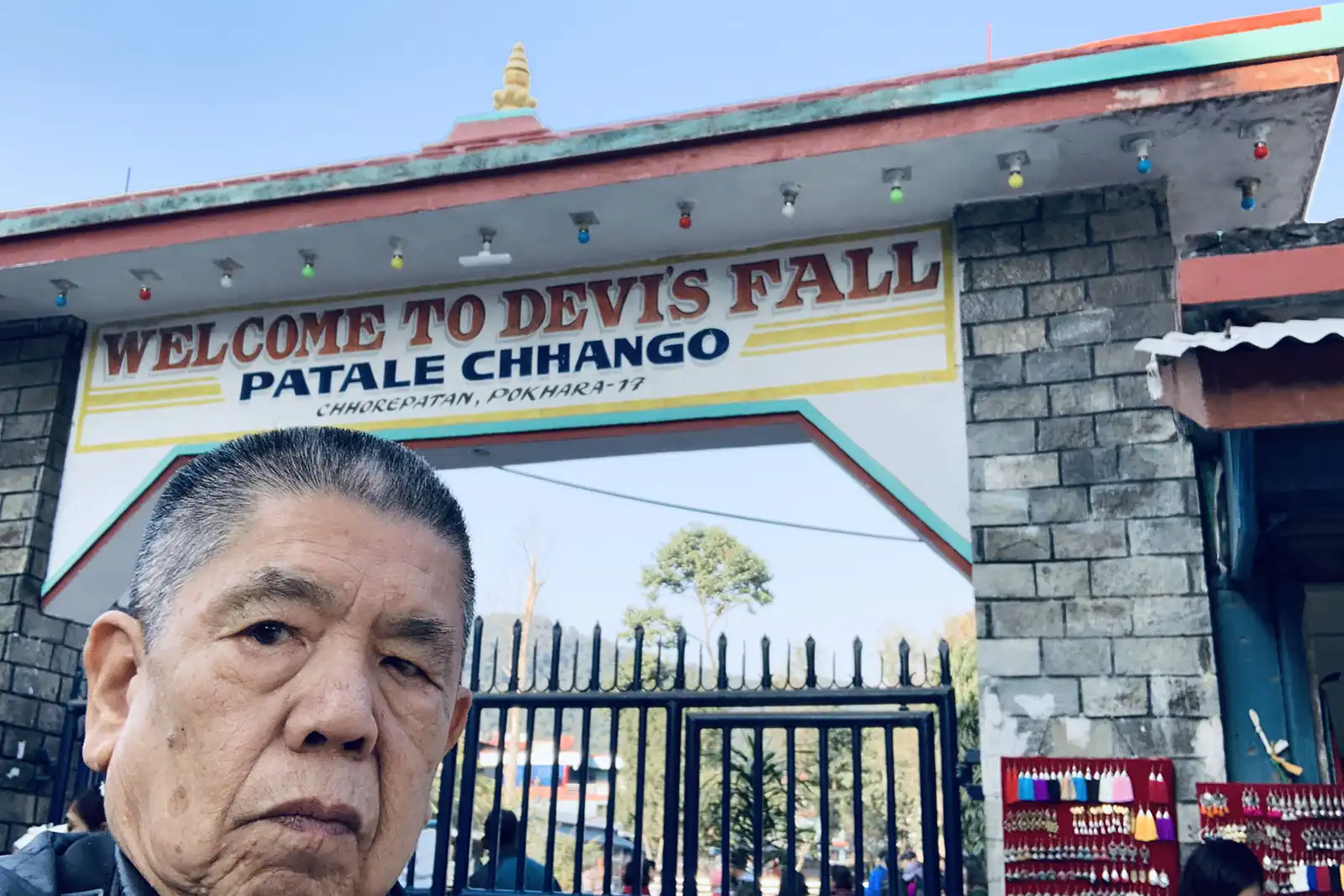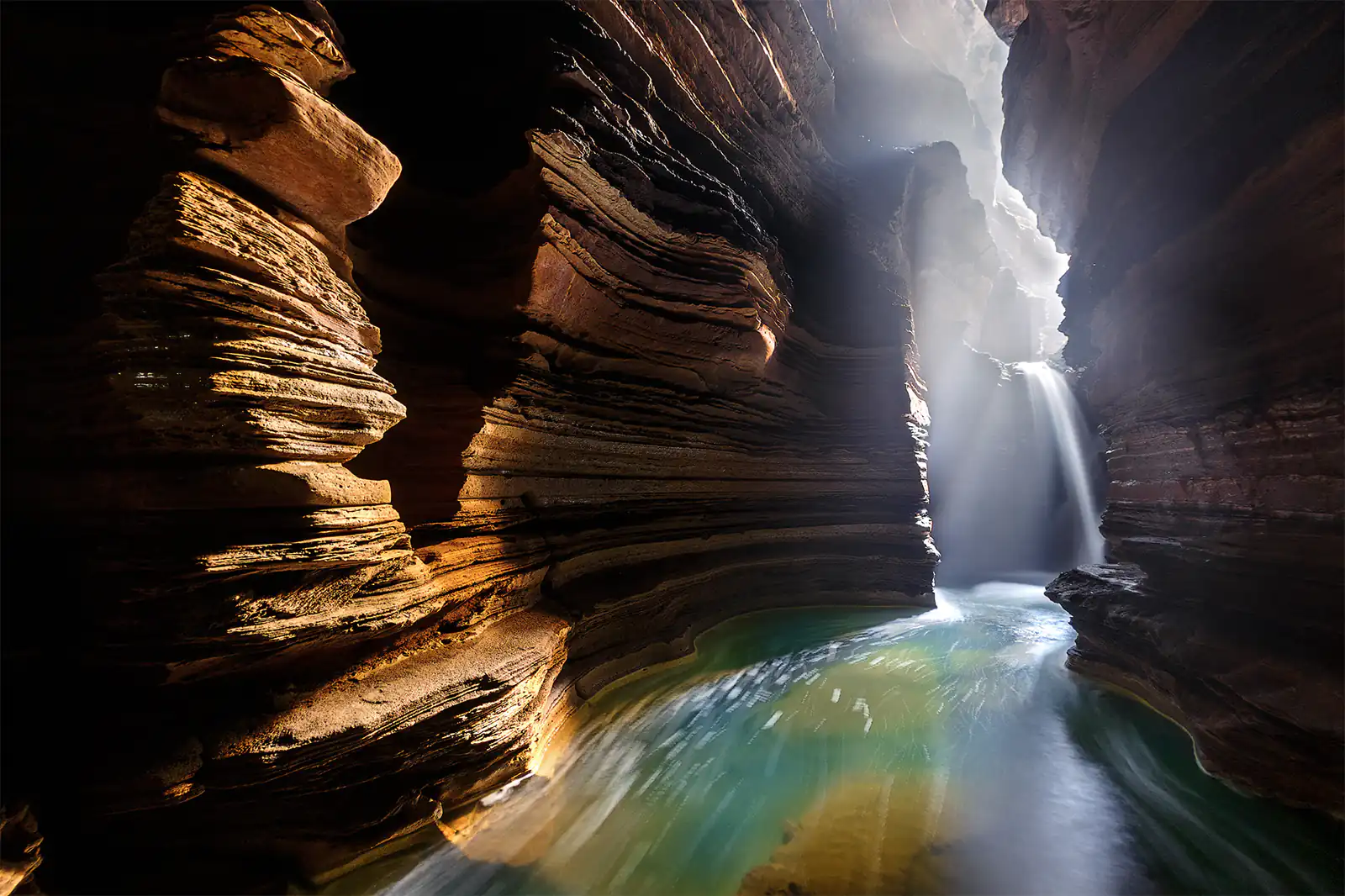Devi’s Fall – Underground waterfall
- Thursday December 29, 2022
- 0
Devi’s Fall, or Davis Falls, is a fantastic waterfall lying about two kilometers southwest of Pokhara Airport on the highway to Tansen. Waterfalls are magnificent, but Devi’s waterfall is unique from all other waterfalls as the water is lost in the earth; you cannot see its end.
Lake Phewa is Davis Falls’s source; the lake water flows the Pardi stream, carrying its waters directly to the gorge, into which it falls in cascades, forming Devi’s Falls.
Locally known as Patale Chango, which means Patal ko Chhango (fall of Hell), water falls into the karst funnel from a height of about 100 m. The bottom is not visible from above.
If you are planning to visit Pokhara or stay on Pokhara during ABC Trek or Annapurna Circuit Trek, this is the one sightseeing you shouldn’t miss.

Why is it called Devi’s Fall?
According to a legend, in July 1961, the Swiss couple was swimming in Lake Phewa. Due to the unexpected flood in the lake, a wife named Davy has swept away into the fall’s water. The rescue team could find the body only after three days in Furse River. The despairing husband suggested the name of the fall should be attributed to his late wife to pay homage to her. Thus the name Devi falls.
Now, the trail is equipped with metal handrails and fences for safety. During the dry season, you can go down into the Gupteshwor cave and look at the waterfall from below.
Davis Falls, where the Pardi River disappears into the Gupteshwor cave. The scenario is especially impressive during the monsoon season when the amount and current of the water are n full swing. The misty white cloud formed by the waterfall is astounding and the waterfall sound plunging down the gorge is deafening.
The falling water forms a tunnel in the cave 150 m extended and 30 m wide below ground level. When it reaches Lake Phewa, the tunnel size increases to 1000 m. From there, the water then converges into the Furse River.
However, during winter, the water volume decreases. The bizarre rock formation, which used to be underwater, came to the surface.

Why visit Davis Falls?
Devi’s Fall is situated in Chorepatan of Pokhara along the Siddhartha Highway. The water released from the dam of Lake Phewa makes its way to Seti River following the routes of Davis Falls and Gupteshwor Cave.
It has always been the focal attraction of Pokhara. Some may come to admire the beauty, while others see the tragic place where the incident occurred.
Another place you can admire, along with Davis Falls, is the Gupteshwor cave, where you can see the naturally formed deity structures, but the main attraction is the upright Shiva Lingam.
The outlying area of Davis Falls is perfect for a family picnic, for there is an Amusement park for children and adults. The wishing Pool in Devi’s Fall is another attraction where believers toss a coin to fulfill their wishes.
How do you get to Davis Falls?
Devi’s Fall is close to Pokhara center (2 km), so you can take a taxi, rent a cycle, or walk.
Entrance fee
You can visit Devi’s Fall every day from 6 am to 6 pm, and the entry ticket to the fall costs you NPR 100 per person.
Best time to Visit
We often suggest you avoid monsoon season for any exploration in Nepal. But to watch Devi’s fall in full glory, you must come here during the monsoon season when the waterfall is in full swing.
Mixed this place with Pokhara sightseeing
You can mix Devi’s Fall with your Pokhara Day Tour. This is just opposite the Gupteshwor cave and on the way to World Peace Pagoda Pokhara and the newly constructed Shiva Temple. Just half an hour is enough to visit Davis Falls. You can take photographs here of different ethnic dresses of Nepalese people.





